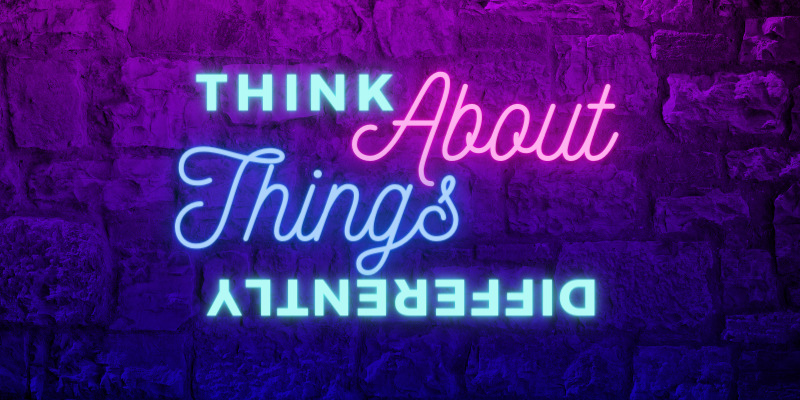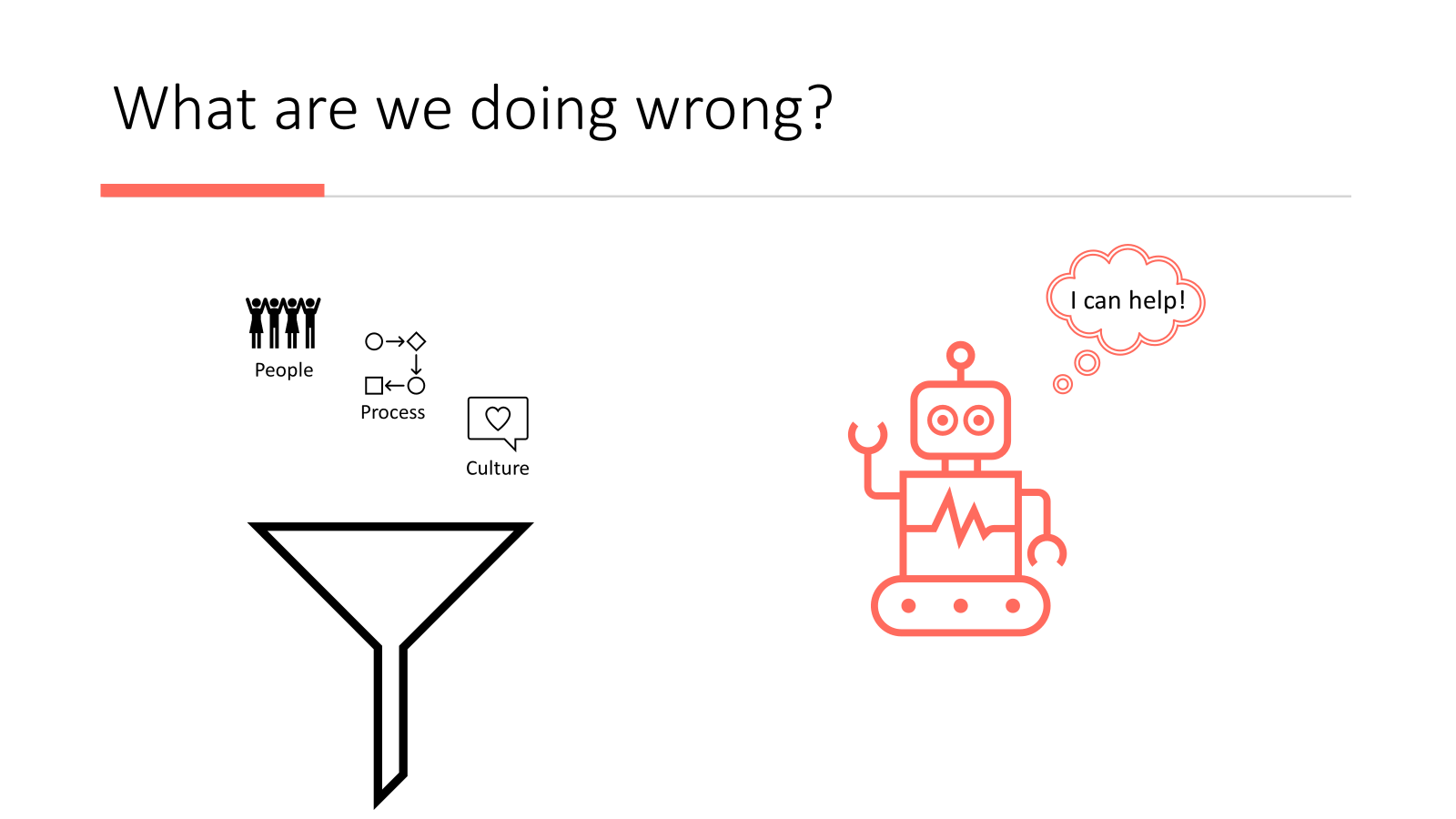The PMO Parallax
Helping Project Management pass the vibe check, one (chaotic good) retrospective at a time!
A little about me if we haven't yet met. My name is Amanda Frye, COO and Head of Operations at Talentcrowd. I have spent the better part of the last 20 years in Project, Product and Organizational Change Management roles. I am a people first, data second kind of person. A marketing enthusiast. A wife, and mother to 3 kids, 2 dogs and a cat.
On April 19th I was asked to speak at a local college on "The Dynamics of Change: Building Resilient Organizations and Future Leaders. So, when my wonderful friend Jen Maitland asked me to come and speak about Organizational Change Management, I jumped at the chance to talk about my passion to an audience that couldn’t run away!

Let's start with a number:
It’s not great? What, typically a C- in the college world right? Well, to me, in organizational change management, it means something much worse.
According to a McKinsey study, 70% of all change initiatives fail. So, take a moment to look around the room or organization. Imagine if every person there started a new change initiative.
Three out of every four people you see would fail. It’s a bit of a sobering thought, isn’t it?
But this is where it gets interesting—and where I want to begin our journey today. Despite this scary statistic, the very act of attempting to understand and applying effective change management techniques can dramatically increase your chance of success. It turns out that knowledge, strategy, and a little bit of resilience can shift the odds in our favor.

So, I’m going to take you on a little adventure, if you’ll come with me? It's called - 'The Dynamics of Change: Building Resilient Organizations and Future Leaders.”
Now keep in mind that we’re not just talking about theories and concepts here. We’re going to go through real life, practical tools and insights that will put that 70% statistic in your rear view mirror.
Are you ready to be part of that transformation?!?!
Alright! That’s more like it! Let’s do it!"

Things are moving so fast...
Let’s talk a minute about the pace of change, and why all of a sudden it seems like such a bigger problem than it used to.
Have you ever learned a new tool, just to find out it changed immediately after? Or, you finally get your phone set up the way to like it, but it stops working and is completely obsolete. Does it feel like you’re constantly playing catch-up? Me too.
Why does it feel like change is happening at warp speed compared to when we were younger?
Because it is...
- In the Paleolithic Era, from the dawn of humanity to the Neolithic Revolution, the economy doubled every 250,000 years.
- Then came the New Agricultural Era, where the economy doubled every 900 years, a significant leap from the previous era.
- But it wasn't until the Industrial Revolution that we witnessed a seismic shift in the pace of change, with the economy doubling every 15 years.
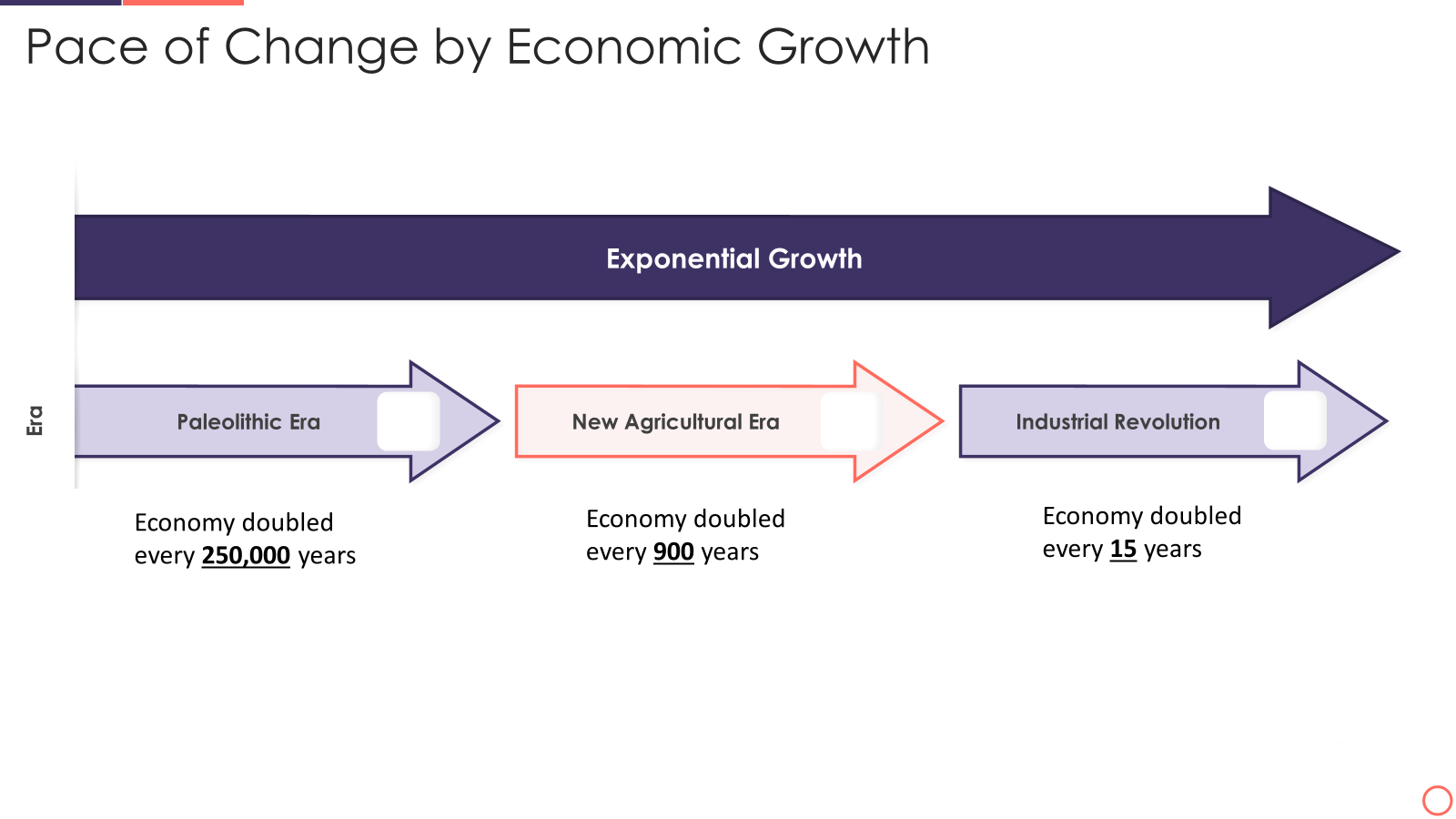
So, what does all of this mean for us? Well, it means that the rate of change we're experiencing isn't just a figment of our imagination—it's a tangible reality driven by the exponential growth of technology and the interconnectedness of our global economy.
In the face of such rapid change, it's no wonder that businesses, organizations, and individuals are feeling the pressure to adapt and innovate at lightning speeds. But fear not, because we can navigate this brave new world together, and we'll uncover strategies and insights that will empower us coordinate the chaos!
When we are trying to affect change, there are 2 different kinds of change to consider: Individual and Group/ Organizational. Think of this like Psychology vs Sociology.
Luckily for us, some very smart people, spent a lifetime researching and adapting reusable change management frameworks for us. They’ve sort of became the Swiss Army knives of the business world – very versatile, practical, but occasionally confusing, and a bit of an overkill at times.
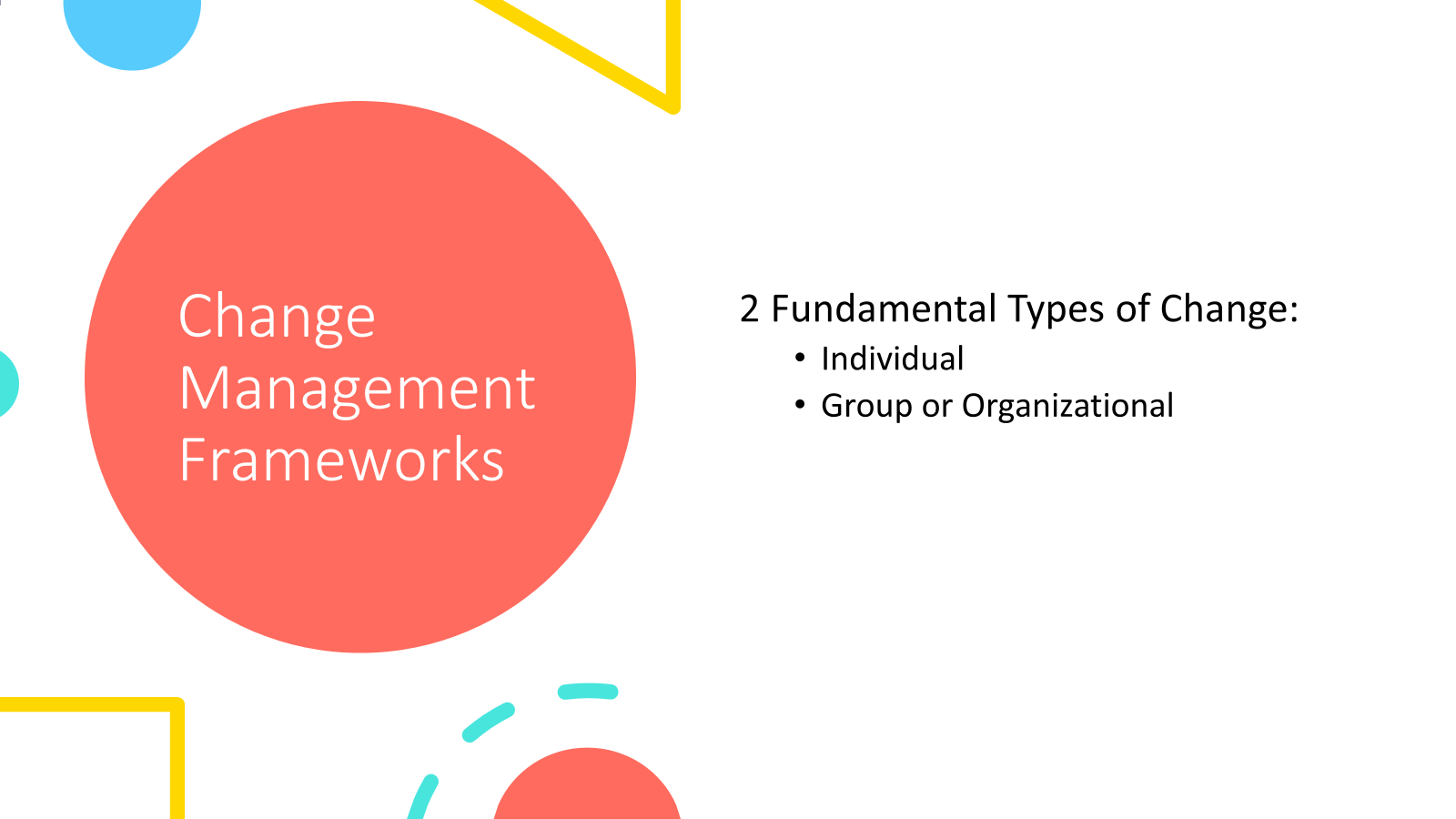
First, we've got ADKAR, a handy acronym that sounds like it belongs in a pirate's treasure map.
- ADKAR is a change management model that focuses on individual change. It stands for:
- Awareness: Understanding why change is needed.
- Desire: Developing the desire to support and participate in the change.
- Knowledge: Acquiring the knowledge and skills necessary for change.
- Ability: Having the ability to implement the change effectively.
- Reinforcement: Ensuring that the change is sustained over time through recognition and reinforcement.
- In essence, ADKAR provides a structured approach to help individuals navigate through change by addressing their awareness, motivation, knowledge, skills, and the reinforcement needed to make the change successful.
For example: If my neighbor came up to me and said, "Amanda I’m going to paint your fence bright orange." I would say, "Absolutely not, I’m not doing that, and if you do it, I’m just going to paint back over it until it was the way it was before."
BUT - If my neighbor came to me and said, “Amanda, I have great news! I have a way to get rid of all the mosquitos in our yard. All we have to do is paint the fence bright orange!” I’d be like, "Absolutely, when do we start, hand me a brush!" It's all about perspective, and what's in it for me!
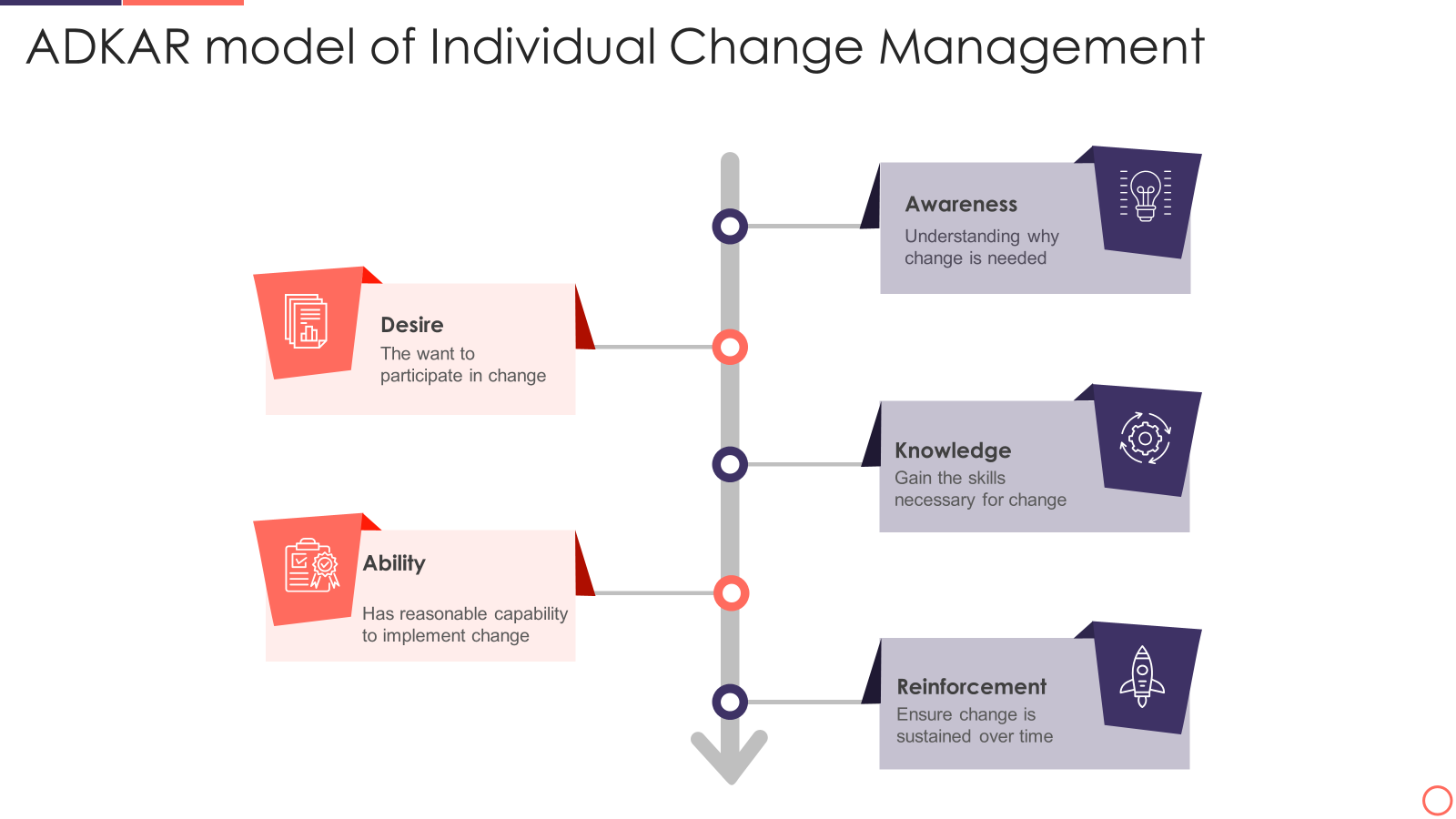
And then there's Kotter’s 8-Step Process – eight steps to change management success, or as I like to call it, the "choose your own adventure" version of organizational transformation.
- Create a Sense of Urgency: Convince stakeholders of the need for change and the importance of acting quickly.
- Nothing dies quicker than an idea without a timeline
- Form a Powerful Coalition: Assemble a group of influential individuals who can support and drive the change initiative.
- The 3 C’s: Change Champions, Cheerleaders and Coaches!
- Create a Vision for Change: Develop a clear and compelling vision that outlines the desired future state after the change.
- If you can’t explain it simply and eloquently, you don’t understand it well enough yet! (Demming)
- Communicate the Vision: Effectively communicate the vision to all stakeholders to ensure understanding and buy-in.
- This is the movie trailer, the concept art, the marketing promos
- Sell people on the awesomeness!
- Empower Employees for Broad-Based Action: Provide employees with the necessary tools, resources, and authority to contribute to the change effort.
- NEVER make a change without speaking to the people directly effected by the change
- People buy in when they feel like they’ve had a chance to give input, even if you don’t ultimately go with their suggestions.
- Get ahead of people, give them what they need before they need it
- Generate Short-Term Wins: Implement quick wins to demonstrate progress and build momentum for the change initiative.
- Celebrate Everything
- Get people caught up in the momentum and excitement
- Consolidate Gains and Produce More Change: Build on the momentum of early successes to implement further changes and address remaining challenges.
- Prepare for iterative change and lessons learned
- Anchor New Approaches in the Culture: Embed the changes into the organizational culture to ensure long-term sustainability.
- Create training and reinforcement documents
- Develop Onboarding processes that support the change
- Monthly/Quarterly Committee meetings
Check out the author in this month's Book Club recommendation for more insights: Leading Change

As we move into the future, we are faced with a landscape shaped by emerging technologies, cultural shifts, and rapidly evolving industries. We always hear, “Organizations must navigate these changes with agility and foresight to thrive in the digital age.” But what the heck does that even mean anymore?
Well, let’s address the robot in the room. Anyone else tired of hearing the term AI?
Unfortunately, it’s here to stay. The rise of (AI), (VR), (AR), and endless possibilities for new software and system implementations have brought a new era of innovation and mass disruption across ALL industries.
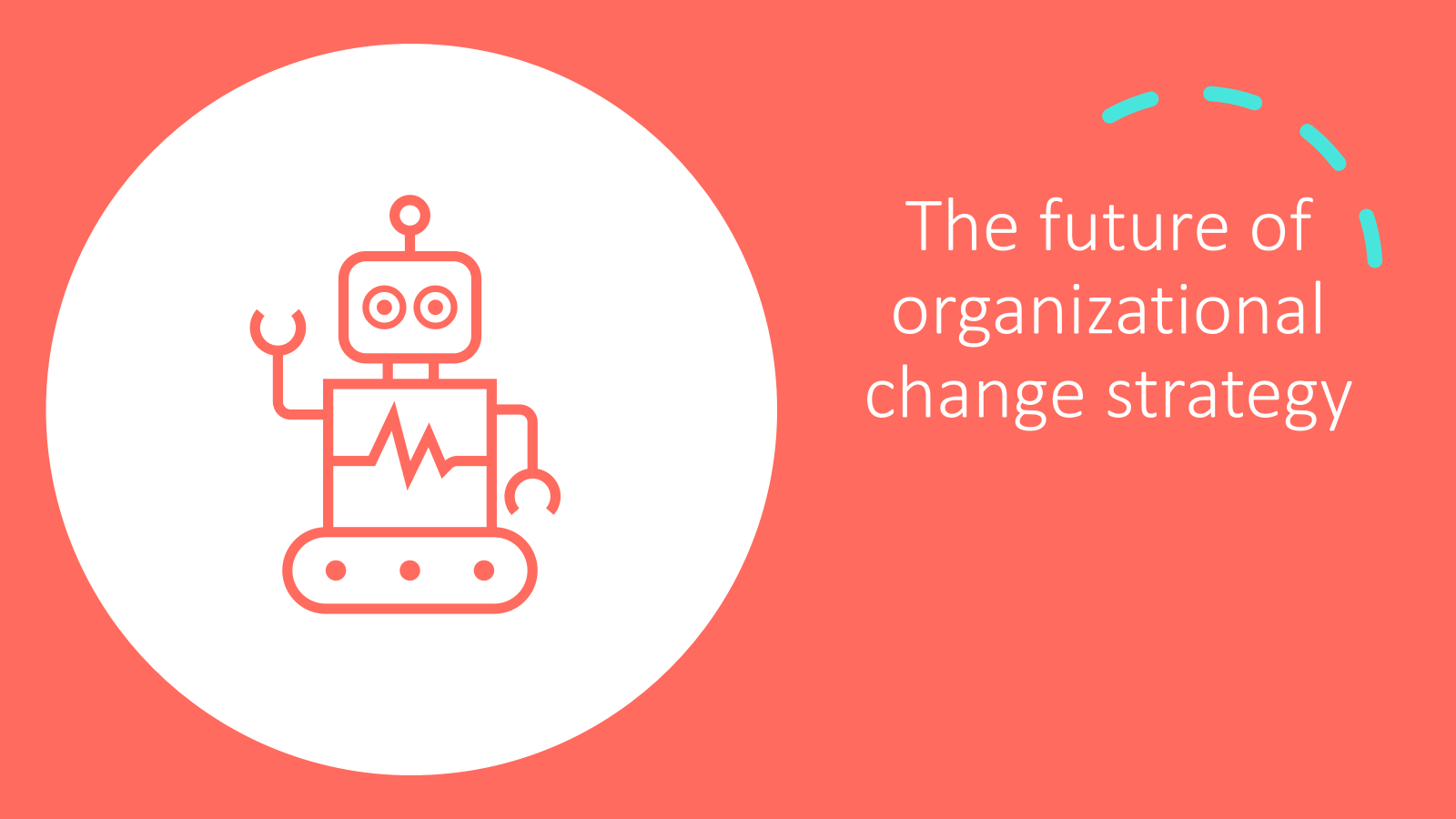
These technologies offer unparalleled opportunities for efficiency, productivity, and customer engagement. However, organizations need to resist the urge to try every latest trend that emerges.
Everyone is jumping on the AI bandwagon, without really even knowing what it means in the context of their specific implementation. Organizations must carefully access the impact of these technologies on their workflows, business models, and employee roles.
There is a place for AI and all technology within our businesses, but it is not a one size fits all.
Every technology tool every made, was meant to make your business easier and more efficient. BUT, they are not going to solve underlying people, process and culture issues for you. These should be sorted out before deciding on a tool.
- What problems are we trying to solve?
- Can our problems be solved with more people?
- Can our problems be solved with better process?
- How does this problem play into our culture?
- What are our expectations of the new tool(s) we are implementing?
The tool may inadvertently force you to resolve some of your issues in order to use them, but if your organization is a mess, AI isn’t going to solve that for you out of the box.
Organizations must proactively anticipate and respond to these considerations, leveraging change management principles to drive successful transitions, capitalize on emerging opportunities, and stay ahead of the curve.
So, given everything that we’ve discussed, what can we do to help prepare our future leaders?
Our educational systems have traditionally focused on imparting technical knowledge and academic skills, often overlooking the critical aspects of adaptability, critical thinking, and emotional intelligence. While these technical skills are undoubtedly important, they alone are no longer sufficient to navigate the complexities of today's rapidly changing landscape.
Adaptability, the ability to embrace change and thrive in dynamic environments, is a skill that cannot be overstated in the context of leadership. Our future leaders must be equipped with the mindset and tools to not only accept change but also to proactively drive it forward, leveraging opportunities for growth and innovation.
Similarly, critical thinking is paramount in enabling leaders to analyze complex situations, evaluate different perspectives, and make informed decisions. Future leaders must be trained to think critically, to question assumptions, and to challenge the status quo in pursuit of continuous improvement and excellence.
Emotional intelligence, or the ability to understand and manage one's own emotions and those of others, is another essential trait for effective leadership. In today's interconnected and diverse world, leaders must possess the empathy and interpersonal skills necessary to build strong relationships, inspire trust, and foster collaboration. Conversely, they must also be able to handle typical obstacles faced by teams such as resistance to change and communication barriers.
I know I’m a bit biased in this area, but we should be incorporating more project management and change management principles and practical applications into academic programs to better prepare students for the realities of the workplace.
Final Reflections
As we move into the future of burst innovation, we have to keep an open mind. What we understand about computing, security, artificial intelligence, green technology... etc, will eventually become obsolete. It's hard to conceptualize that in the present moment though. This is why it is so important to focus on people, process, culture & technology. But most importantly - the balance between them.
What did we learn?
- Change is normal
- Change is happening at a faster pace than ever before
- Change is manageable
- Don't get caught up in the hype!
- Get your house (People, Process, Culture) in order, before you invite new guests over (New Technology).
- Prioritize Adaptability, Critical Thinking, and Emotional Intelligence
- Everything else is teachable
Thank you so much to the Washtenaw Community College - Business Advisory Board for letting me speak, and involving me in their strategy sessions for the day!
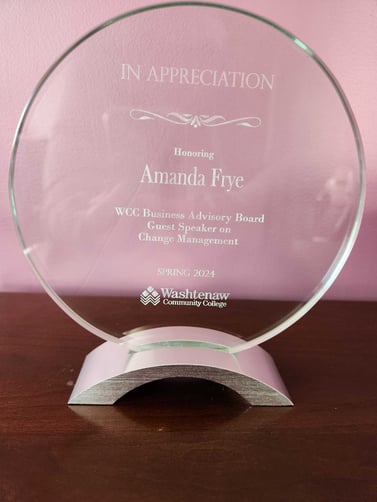
Check out this month's Book Club recommendation for more insights: Leading Change
